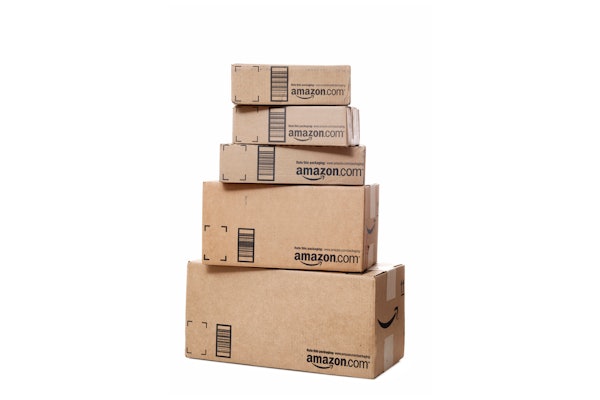Robotic carton stacking is at the heart of a newly automated packaging line at Necco, one of the oldest candy companies in the country.
Based in
Also popular are Necco’s Sweethearts Conversation Hearts, and it’s in the packaging of these colorful little morsels that robotics comes into play. A pair of Flex Picker robots from ABB (www.abb.com) produces stacks of 1-oz carons in 4-, 8-, or 12-count formats so that the stacks can run through either a Shanklin (www.sealedair.com) shrink wrapper or a Carera 2000PC flow wrapper from Ilapak (www.ilapak.com). Since the new equipment was installed about a year ago, throughput is way up and labor costs down. For example, in stacking a four-count format, Necco has gone from 30 shrink-wrapped stacks/min to 125. And where six people formerly were occupied in hand-stacking the cartons, five of these are no longer needed and have been redeployed elsewhere in the plant. No wonder the automation upgrade had a one-year payback.
One thing that hasn’t changed is the high-speed volumetric vertical cartoner at the head of the line. Supplied by Tisma (www.swfcompanies.com), it kicks out Conversation Hearts at a rate of 500 1-oz cartons/min. Keeping up with that kind of output is no easy task.
“We used to collect and palletize millions of cartons as work in process,” says Necco engineering manager Frank Russo. “Then we’d bring the pallets to a semi-automatic packaging station feeding into a shrink wrapper. It required lots of labor and it was very slow. Automation was clearly the answer.”
Help in assembling the necessary machinery came from JLS Automation (www.jlsautomation.com).
“We evaluated a number of automation options, including hard automation as opposed to robotic,” says Russo. Robotics won out, largely because it permits such rapid changeover from one stack format to another. Once the one-year payback on the investment was calculated, Russo was further convinced that robotics was the way to go.
Synchronized machines
To watch the new line in action is to be reminded just how efficiently discrete pieces of packaging equipment can be synchronized. The Conversation Hearts drop from an overhead bin one floor above into the Tisma machine. It erects cartons from flat blanks and glues the bottoms shut with a Nordson (www.nordson.com) adhesive applicator. It then uses a high-speed system of buckets to volumetrically fill the cartons. It folds and glues the carton tops shut and then discharges the cartons single file through a metal detector from Thermo Fisher Scientific (www.thermo.com).
A series of conveyor connections supplied by Dorner (www.dorner.com) brings the single-file flow of cartons to the infeed of the ABB robotic cell. Photocells along the conveyor path extending from the cartoner’s discharge up to the robotic cell detect position of the cartons. If no gaps are detected, that indicates that cartons are beginning to back up and accumulate. So the ControLogix controller from Rockwell (www.rockwellautomation.com) signals the variable frequency drive in each Dorner conveyor to speed up. The robots and the downstream shrinkwrapper and flow wrapper are also networked in such a way that they, too, can speed up or slow down to match line conditions.
Once inside the robotic cell, a second Dorner conveyor runs parallel to the infeed conveyor and functions as a collation conveyor. On the day Packaging World visited the plant, 12-count multipacks were in production. For this format, the first robot picks four cartons in its vacuum cup end effector and places them on the collation conveyor. It lets the next four cartons go by and then puts the next four either directly onto the collation conveyor or on top of four cartons it has already placed on the collation conveyor.
The second Flex Picker robot in the ABB cell completes the task of carton collation by adding the third layer of four cartons to stacks that are two layers high or by adding the second and third layers if need be. In other words, whatever the first robot hasn’t done, the second one takes care of it.
The collation conveyor on which cartons are stacked is also supplied by Dorner. But it’s driven by a servo motor/drive combination supplied by Bosch Rexroth (www.boschrexroth-us.com). The timing of this servo motor is controlled by an encoder mounted inside the downstream Shanklin shrinkwrapper or Ilapak flow wrapper. This encoder/server connection ensures that the forward progress of each stack of cartons is timed so that it matches up with the flights on the infeed conveyor leading into the Shanklin or the Ilapak.
On to multipacking
Neatly stacked cartons exit the robotic cell and proceed through either the Shanklin shrink wrapper or the Ilapak flow wrapper. The shrink wrapper applies a clear film around the cartons and shrinks it down tight in its heat tunnel. The Ilapak machine, on the other hand, creates a multipack with a peg hole for hanging display. Both the Shanklin and the Ilapak are mounted on wheels so that either one can be inserted into the line when needed.
“We try to run the line all week before pulling out one and replacing it with the other,” says Russo. “When we do make the switch, it only takes a couple of hours to be back in production. Just pull out a plug and plug in the new machine.”
Exiting the Shanklin or Ilapak, the film-wrapped multipacks run through a top-and-bottom pressure-sensitive labeler supplied by ID Technology (www.idtechnology.com). It affixes a price tag on the top of each multipack and a nutrition label on the bottom. A final conveyor length takes finished multipacks off to a manual case-packing operation.
Automating the case packing operation, says Russo, will be the next step. It’s complicated by the number of multipack formats that need to be handled. But Russo indicates that research into automated case packing is now underway.
In the meantime, with multipacks growing increasingly popular in a marketplace dominated more all the time by high-volume retailers fixated on what they like to call the “high ring,” Necco’s robotic solution puts the firm in a perfect position to keep its Sweethearts Conversation Hearts the #1 selling Valentine’s Day candy.
































